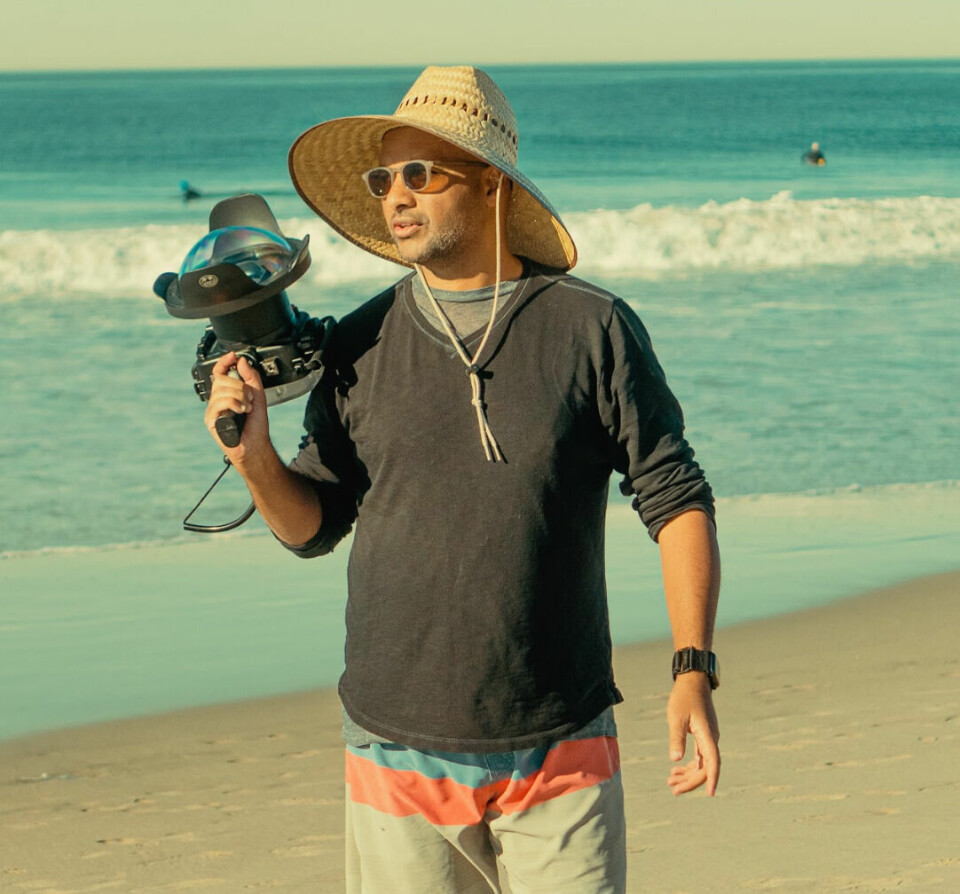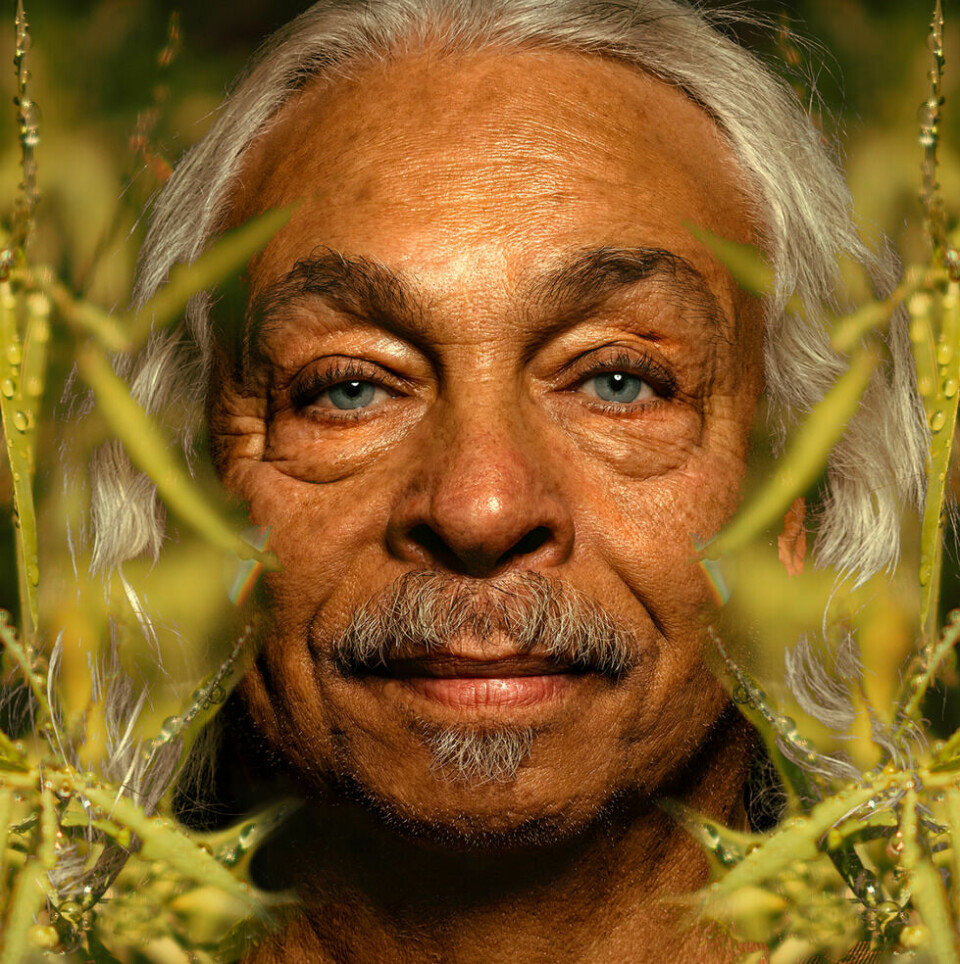Africans Are Taking Surfing Back
We sat down with Ethiopia-American director David Mesfin to discuss the importance of knowing where you come from, and his upcoming surf doc 'Wade In The Water'

For so long, Black and African communities have been made to believe that the water was our enemy, often citing the traumatic history of African slaves drowning at sea during the Atlantic Slave Trade. But, what certain people with certain agendas failed to add was the fact that the slaves had such a powerful understanding of the ocean that slave owners began to torture them into fearing the thought of it.
The sight of canoes and surf canoes along West Africa’s coastlines give evidence of the innovative ways coastal communities broke through their harsh waters to fish, communicate and trade.
Today we associate surfing with beach-sand-colored hair; long white limbs combing through the water; and thick, tattooed bodies standing tall above the waves. But, before Brad was “rad” and learned how to hang loose while on holiday in Maui, African surfers were crashing through waves. There is a long history of African surfers that can be traced to as early as 1640.
And now African American surfers are educating and empowering themselves as they step further into their own identities and self-expression.
One person is Ethiopian-American award-winning creative director and surfer David Mesfin. After being adopted by an American family, Mesfin found his solace and future in the reflection of the Florida waters. His learning of the thousand-year-old connection he has to the sport inspired him to create a documentary detailing the history and present-day existence of Black surfers.
We spoke with David about how his love for surfing came to be, the power behind knowing where you come from, and his soon-to-be-released surf documentary, Wade In The Water.
Responses have been edited for length and clarity.
Tell us your story, David.
I've been surfing for quite a long time. I'm originally from Addis Ababa, Ethiopia. We have amazing rivers and lakes and we have the Nile that flows up north to Egypt. There is a trace of connection to the ocean, the river, and so forth, but not by means of Addis Ababa. In the ‘80s I was adopted by an American family and moved to a small town called St. Augustine, Florida.
Surfing is what most people did there – that was the culture. I landed there, not knowing how to swim, and ended up learning with kids as young as three. As I improved, one of the lifeguards was a surfer and suggested I try out surfing. I just remember my eyes were burning because the East Coast water is full of salt. I’m like “How do these people open their eyes? How can they see?”
But, I fell in love. The ocean became my mother. It became my refuge.
I left my mother and father in Ethiopia – I was here all on my own. I was learning this new skill, learning how to speak English, and learning how to connect with this culture.
So, the ocean became your safe space.
Yes. The ocean became a place where I could escape hard times, like racism, people making fun of me, and not being able to achieve what I wanted to. But, it also became a place of celebration. Surfing became the space I needed to go to whenever I needed relief or expression.
How do you end up in California?
I was visiting a good friend during my senior year graduation cross-country road trip. We surfed from San Diego to Malibu (127 miles/204 km) and I fell in love with the coastline – I had no choice but to move here.
You’ve photographed Black Surfers Collective before – how did that relationship begin?
In 2013, Alitash Kebede, a good friend, and gallery owner introduced me to a historian named Alison Jefferson. Alison was a part of Black Surfers Collective. They had begun establishing themselves and were putting together, what is called Nick Gabaldon Day.
Nick Gabaldon was the first documented black surfer in Southern California. I'm sure there were others, but he was the only one documented. In 1950, he paddles to Malibu Pier – big day, big surf – he catches a wave, hits the pier, and dies. And he becomes this mythical legend. He becomes a legend for the things that he did before his death – like paddleboard surfing 12 miles from Santa Monica to the pier because it had broken.
No wonder the community has a day celebrating him.
That event was my first time experiencing Black folks together, celebrating the sport of surfing. Prior to that, you'd see a person here and there. I spent so long thinking, "This is not my culture, but I love it. There's something about this refuge that helps me connect." I had never felt that sense of community or connection.
But then the Black Lives Matter movement began. We, again, go through this moment in time where we all are trying to figure out how to move forward as Black people. How do we want to be identified? And I went back to surfing.
Is that how your 2018 photo sessions with Black Surfers Club came to be?
Yes. It began with the idea, "Hey, I know Black Surfers Collective. I would love to do a portrait of everyone, sell them and I can give them money to help the nonprofit organization."
It was a very simple idea; I thought to put beautiful African Pine tree leaves around people. It was our connection to Africa – it was our roots. And with this idea brewing, I knew that I needed to look into the history of Black surfing in Southern California. So I reached back out to Alison, the historian.
What did you learn in your research?
I discovered the book Afro Surf – and it changed my life.
In the book, it says that surfing independently developed from the coasts of Senegal to Angola. It was a total mind shift. I thought, “Wait a minute. You’re trying to tell me that this is part of my culture? Part of who I am as an African?”
I had always felt like a guest, going into the water. I thought surfing was a Hawaiian cultural practice that white boys in Southern California liked. I was trying to fit in, when in fact it was a part of me.
And it's part of the conversations we're having since Black Lives Matter. The education and awareness of our history as Black people in America and Africa. Really acknowledging who we are, how much we've given in to society, how much we've changed culture, from all aspects. We're not talking about sports, I mean math, science, you name it, everything. It's all hidden.
When you find these things out it really changes your perspective.
How did you plan on sharing this knowledge with the world?
I knew that I had to create a documentary. It’s part documentary, part art show.
I began mapping out the narrative idea, which is the origin story, and the challenges. Challenges deal with the Jim Crow era, the middle passage of African Americans coming to the US. I found out that those captured and placed on the West Coast would escape using rivers, oceans, and valleys because they understood them. The slave masters realized this, and started brutalizing them anytime they touched any body of water.
And that’s where the idea for Wade In The Water comes from?
Yes. It’s said that Harriet Tubman sang that song to slaves letting them know that if you ran through the river, the dogs couldn’t scent your clothes. We also touch on the idea of the Underground Railroad.
What I'm trying to do with the documentary is put a spotlight on those challenges, spotlight the nonprofit organizations that are out there bringing people back to the ocean, back to mother ocean, to reconnect and to be part of this surfing community that is part of us.
There seems to be a spiritual aspect to the documentary.
You know, me being a surfer, the ocean is my refuge. Even though I was raised Christian, there is a spiritual quality to the ocean and what she can do for you mentally, as you go through issues in life, and so forth. And that was an interesting narrative from person to person. Some people identified the ocean as a place of baptism that felt like every time they went there, they were reborn. Once they crossed the line of the land and ocean and they walked in the water, they forgot all their heartache and pain and suffering.
One interesting story is Sierra Raquel’s – she just started to surf. During our interview, I asked her how she got into surfing. She was having a hard time in life during COVID – bad relationships with her family, she had just ruined a romantic one, and she was seriously considering ending her life.
She said, after finding God and a therapist, she needed something physical. She had met some beach guys who told her not to try out surfing, but she did anyway. She said it saved her life.
When will we be able to watch Sierra and more of the community tell these stories?
I’m hoping for October, the fall. I’m submitting to film festivals at the moment and hoping it gets picked up.
In the meantime, I’m showing at different events, surf shops, African American art galleries, and so forth to have these conversations. I want us to talk about the need for, one, mental health, and two, understanding the history of a thousand-year-old and trying to get people back into the water.




